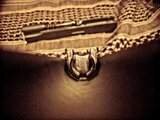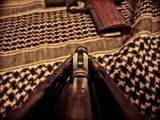- Messages
- 725
- Reactions
- 136
- Thread Starter
- #21
Follow along with the video below to see how to install our site as a web app on your home screen.
Note: This feature may not be available in some browsers.



Looking at the receivers impact surface, you see very pronounced impact points from the lugs - look at the bottom of the impact surface in the, "Bowl."
This is typical with frames that do not have the bow-tie cut...and many of today's frames do not have it. Including most Springfields, some Kimbers, and the list goes on and on. Attention to detail is what makes guns last. But the sad point is, most cut corners and we the buyer suffer for it.
Kentucky Windage, I saw your above post after I posted mine.
If I'm reading your post correctly, I will disagree with the total or whole lower lug impacting the VIS. Only the very top part, where the lugs meet the barrel should make the contact. If the frame has the bowtie cut as originally designed, the whole lower barrel lug won't be able to contact the VIS.
Bowtie should be there. 1911's are classy pistols and deserve it
OP- did you end up finding up a barrel?
Iamme, no barrel yet, I will plan on getting the frame inspected over by someone with 1911 knowledge as I have none. If the frame is still serviceable I will shop for a barrel and someone to install it properly, along with new sights.